#horned lanternfly
Explore tagged Tumblr posts
Text
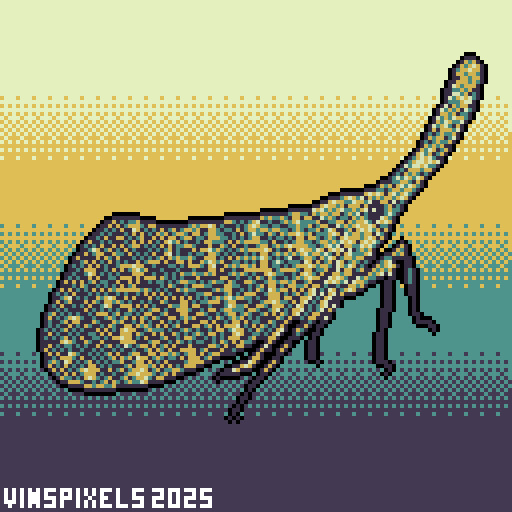
Horned Lanterfly
29 notes
·
View notes
Text

Dark-horned lanternflies (Pyrops spinolae)
457 notes
·
View notes
Text



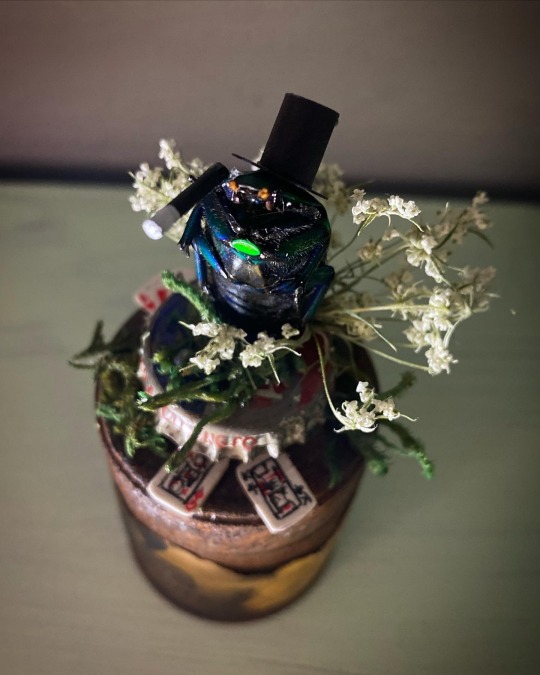
Some of my recent insect dioramas…all made with found specimen and vintage objects.
#diorama#insect diorama#insect art#insect specimen#cw insects#cw bugs#oddities#oddity#cicada#spotted lanternfly#horned beetle#green beetle
27 notes
·
View notes
Text
Another fulgorid, Pyrops spinolae, the dark-horned lanternfly :]

#art#bugs#pixel art#artists on tumblr#insects#tumblr art#bug asks#pixel graphics#art comms open#game dev#planthopper#hemiptera#fulgoridae#bugblr#bug blog
63 notes
·
View notes
Text


Third Prince of Hell: Wrath
Wrath, a sin encompassing many things, it hides even within the kindest of us. Wrath is a powerful entity, and one that often evokes the strongest feelings. This Prince is represented by a Pyrops Candelaria Planthopper, commonly known as a Lanternfly. It flies a war flag on its big horn, and holds onto its blade proudly.
This pin is 2 inches in size with purple chrome metal and a swirl effect on the sword.

Designing wrath was no easy feat. A very important aspect I wanted to keep throughout this collection is not actually demonize any of the bugs. I didn't want to make insects commonly seen as pests represent sins that can be often seen as negative. A different insect species under the same name of Lanterflies are currently facing a lot of hatred due to being labeled as invasive in the USA. At first I had an idea of using an actual lanternfly for wrath- but then realised it wouldn't be a nice way to show off the species and possibly incite even more hatred towards a creature that is simple living its life in unfortunately not its native environment.
Follow the 7 Sinful bugs here.

Spotted lanternfly invasive to the USA.
#enamel pin#enamel pins#lanternfly#plathopper#bugs#bug art#insects#bugblr#demon#demon art#demon design#wrath#7 deadly sins#7 sinful bugs#backerkit#kickstarter#crowdfunding campaign#myart
28 notes
·
View notes
Note
Would you like to draw my HiveWing oc, Lanternfly? Her horns are curled and her tongue is too long for her mouth and sticks out. Her design is based off a spotted lanternfly.


Second drawing is by Minttea31

Yeah! This was a fun design and I loved drawing her <3
#aster answers#crazycatbunker lanternfly#digital art#wof#wings of fire#wof art#wof oc#wings of fire oc#sharp art
28 notes
·
View notes
Note
Would you be able to draw my HiveWing oc, Lanternfly? Her horns are curled and her tongue is too long for her mouth and sticks out. Her design is based off a spotted lanternfly.



30 notes
·
View notes
Text

I needed one last line to round up the elite 4 and here it is~ I really wanted some sort of crocodile to go with the theme I was looking for, but I thought it would be even better to have a crocodile lanternfly inspired mon!
- Grubnub | Bug Type The larva pokemon This little pokemon is gentle and sweet, it's fat body protects him from blunt force making him one resistant first stage. It likes to eat. A lot.
- Scaragator | Bug/Dragon Type The predator mimic pokemon At first glance this pokemon look fierce and dangerous but it's so called maw are modified horns in the shape of tooty jaws. It is a proud and protective pokemon that is quite the intimidating foe. Art & Ohayo Region(c) @little-noko
185 notes
·
View notes
Text

Ace of Horns / Lanternfly (Pyrops whiteheadii)
Upright keywords: Breakthroughs, Concentration, New Ideas, Truth
Reverse keywords: Argument, Confusion, Hostility, Miscommunication
In nature, horns serve as tools of both defense and assertion. Each card within this suit exude sharpness of thought and piercing truth. The Ace of Horns betokens the pursuit of absolute clarity amid the swirling mists of confusion, unveiling truths obscured by uncertainty. Symbolizing the raw unyielding might of the mind, this card indicates a moment of revelation that guides us towards the light of understanding. As with all of the Aces, this card indicates a momentous step forward.
Lanternflies are known for their distinctive and elongated 'horn', which is actually an extension of their head. Sheathed within this hollow structure is a proboscis they use to pierce plants and feed on sap. Mirroring such precision, this card emphasizes the crucial role of mental acumen and astute decision making - championing reason as the pathway to triumphant breakthroughs.
Suggesting the seeker is on the cusp of a new understanding or a significant mental shift, the appearance of this card demands we slice through doubt, see things as they truly are, and approach situations with a clear and focused mind. Knowledge is the key to unlocking the shackles of ignorance and fear.
The Lesson Of This Card: "Clarity and truth illuminate the path I choose to follow."
The Big Bug Gospel Tarot is Live on Kickstarter!

#artists on tumblr#illustration#tara jillian art#nature#bugs#insects#bug tarot#tarot cards#tarot art#big bug gospel#lanternfly#insect tarot#insect art#invertebrate tarot#invertebrate art#bug art#indie tarot
16 notes
·
View notes
Note
You still drawing WOF ocs? If you want to, you can draw my HiveWing oc, Lanternfly! Her design is based off the spotted lanternfly. Her horns are curled and her tongue is too long for her mouth so it’s always sticking out. You can change her design however you want to! I don’t have a reference sheet for her, but I have this drawing you can look at. Totally okay if don’t want to draw her! But here she is if you wanna. :)

great concept and great execution! I hope you like it. The colours were very tricky

22 notes
·
View notes
Text



I realized I never posted the full Invertober art pages, so here they are!
References used (for the more heavily referenced ones):
Lanternfly
Malachite
Wasp
Goliath beetle
Bumblebee
[Image description: Three art pages with drawings of various invertebrates. Each animal has its common name written above and its full taxonomic classification (sans kingdom) written below. Most of them are shown from above unless otherwise specified.
Image 1 has a light blue background and twelve species:
A peanut-headed lanternfly, a light brown insect with a roughly peanut-shaped head.
A malachite, a butterfly with brown and pale green wings, sitting facing right on top of malachite rock.
A common cuttlefish, white with brown stripes, shown facing right.
A fried-egg jellyfish, a jellyfish with a bell resembling a sunny-side-up egg. A few of its thick tentacles are curled up at the tips, revealing blue and yellow bumps on their undersides.
A greater bee fly, a fly evolved to mimic a bee. It is covered in dark yellow and brown fuzz.
A Mexican redknee tarantula. It is black and orange (despite the name).
A ruby-tailed wasp. It has a blue head and thorax, a pink abdomen, and brown wings.
A hammerhead worm. It is mostly bright orange with a semicircular black head and a black-bordered white stripe going down its back.
An anthropomorphized dinosaur ant, a light brown ant with long mandibles. She is wearing a green onesie with a dinosaur on it and sitting with her knees bent and her upper right hand resting over her lower right hand.
A magnificent sea anemone, a wide anemone with a bright pink body and green tentacles.
A goliath beetle. It is black and white with brown elytra.
A Japanese spider crab, a red-and-white crab with very long and thin front limbs.
Image 2 has a light green background and twelve species:
An early bumblebee. It is yellow and black with the back of the abdomen being orange.
A redwood sideband snail. Its body is dark brown, and its shell is dark purple on the outside gradienting to yellow in the middle.
A comet moth. Its wings are a light yellow-green with a brown eyespot on each one and two long “tails” coming off the hind wings. Its body is yellow, and its antennae are brown and very fluffy.
A yellow-spotted isopod, dark grey with yellow spots.
A wingless dragon based on a female European glowworm. It has pale pink skin and dark brown horns and plating along the back. Bright yellow-green light radiates from the tips of its horns and tail in star shapes.
An Anna’s magnificent sea slug, a blue-and-black nudibranch with orange gills and antennae and an orange-and-white frill around its body.
A yellow tube sponge. It looks exactly the way its name implies.
A three-banded lady beetle, a ladybug with five rectangular spots (two pairs on the outer edges of the body, one band across the middle).
A strawberry squid swimming with its body tilted to the right. It is dark pink, and one of its bright green eyes is noticeably larger than the other.
A Linne’s cicada, green with darker green markings, sitting with its wings folded.
An orange-legged dronefly sitting facing right. It has a yellow head and thorax, orange abdomen, light pink wings, and dark brown legs with orange feet.
A giant Asian mantis standing facing right, only the front of the body shown. It is light green with light yellow eyes.
Image 3 has a light yellow-orange background with seven species:
An Indo-Pacific horseshoe crab. It is a light greenish grey.
An ivory millipede, a black-and-white millipede, walking to the left with its body curved into an S shape.
A yeti crab, a greyish pink crab with thick white fur around its pincers.
A wavy-lined emerald moth, a light green moth with white line markings on the wings.
An anthropomorphized bold jumping spider shown from the waist up. They are dark grey with four black eyes, six arms, and a handful of hairs sticking up around their head, and are wearing a bright green tank top. They’re waving with their upper left hand.
A Johnson’s sea cucumber, red-orange with white “spikes” and tube feet, shown from the side.
A Halloween crab, a black and red crab with purple and light blue front limbs / pincers. It is standing facing the viewer. There are thick yellow markings over its eyes that make it look like it’s doing a pleading face.
End ID.]
#original art#animals#sponges#crustaceans#insects#arachnids#millipedes#cephalopods#gastropods#demosponges#sea cucumbers#spider#spiders#lanternfly#butterfly#moth#wasp#ant#bee#mantis#cicada#crab#isopod#horseshoe crab#cuttlefish#squid#ladybug#anthro#dragon#beetle
2 notes
·
View notes
Note
by any chance are you aware of the longan lanternfly
Had to look them up to see if they had any relation to the invasive Spotted Lanternfly— it does say here that they are a new invasive species but there’s no like Big article that talks about these guys if it’s true (Mostly the Spotted Lanternfly comes up). Feel free to correct me !
Outside of discussion whether these guys are invasive or not they’ve got really pretty colors and a funny horn the wings remind me of the matrix

24 notes
·
View notes
Link
June 28, 2022
The Canadian Council on Invasive Species (CCIS) gave a short presentation of the top 10 invasive species already in Canada or that could come to Canada from south of our border and that we therefore should be on the alert for.
The top 10 invasive species were as follows:
Asian long-horned beetle, Anoplophora glabripennis
Spotted lanternfly, Lycorma delicatula
Asian giant hornet, Vespa mandarinia
Emerald ash borer, Agrilus planipennis
Hemlock woolly adelgid, Adelges tsugae
Brown marmorated stink bug, Halyomorpha halys
Dutch elm disease, Ophiostoma ulmi and Ophiostoma novo-ulmi
Japanese beetle, Popillia japonica
Spongy moth (also LDD moth; previously gypsy moth), Lymantria dispar dispar
Lily leaf beetle, Lilioceris lilii
I have definitely seen at least three of these species and/or the damage they have done, specifically 4, 8, and 9.
You can help by reporting these species through, for example, iNaturalist. CCIS has their own project on iNaturalist, titled “I Spy and Identify Invasives / Je vois, J’identifie les espèces envahissantes”, which you can join: https://www.inaturalist.org/projects/i-spy-and-identify-invasives-je-vois-j-identifie-les-especes-envahissantes. The CCIS also has a whole webpage on how and where to report: https://canadainvasives.ca/take-action/report/.
#wildflowers of southern ontario#invasive species#canada#Canadian Council on Invasive Species#inaturalist#Asian long-horned beetle#Anoplophora glabripennis#Spotted lanternfly#Lycorma delicatula#Asian giant hornet#Vespa mandarinia#Emerald ash borer#Agrilus planipennis#Hemlock woolly adelgid#Adelges tsugae#Brown marmorated stink bug#Halyomorpha halys#Dutch elm disease#Ophiostoma ulmi#Ophiostoma novo-ulmi#Japanese beetle#Popillia japonica#Spongy moth#LDD moth#Lymantria dispar#Lymantria dispar dispar#Lily leaf beetle#Lilioceris lilii
12 notes
·
View notes
Photo
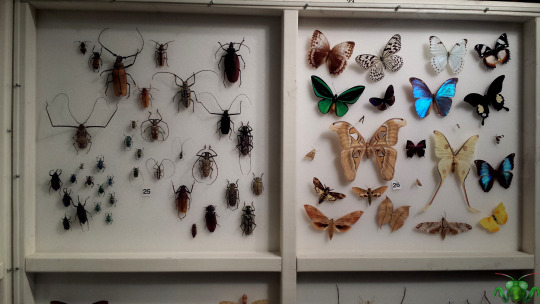
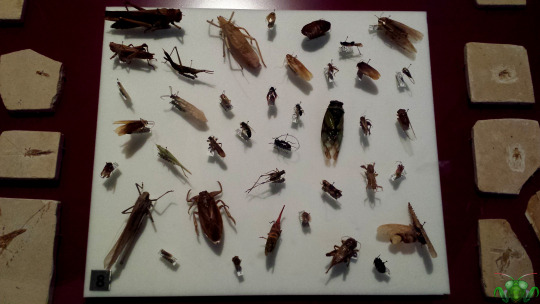


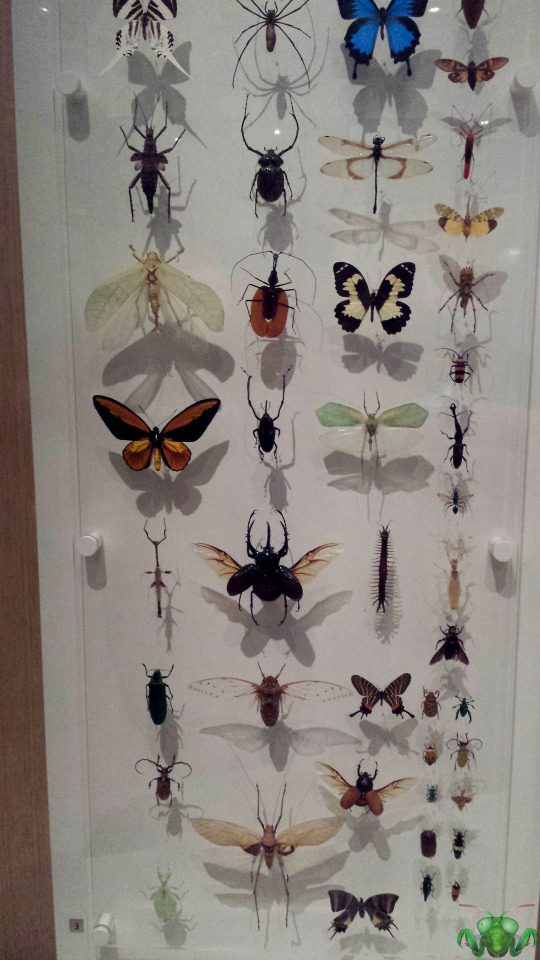
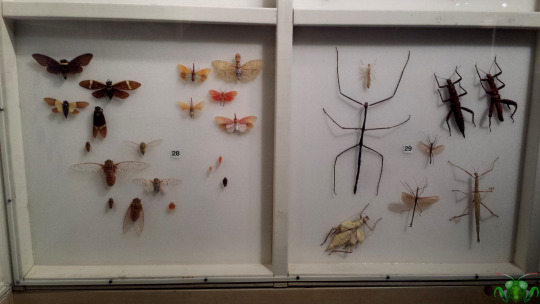
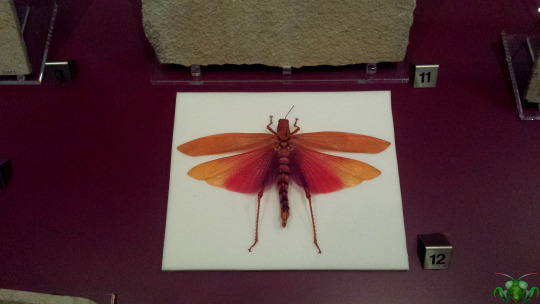
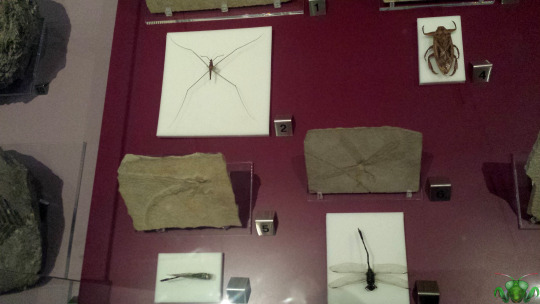
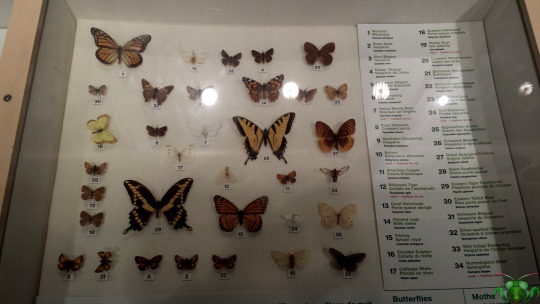

Royal Ontario Museum - Insect Exhibits 1
Well this is certainly different and there are a lot more insects than usual! Must be a special occasion, and it absolutely is! I’m dedicating this post to Ally, one of my dearest friends and a major inspiration for this blog. We’ve known each other for around 7 years now, having met in U of T’s 3rd year Insect Biology course. We’ve been on many a bug hunt together (and hopefully more in the future)! She loves insects even more than I do, so much so that she continues to study entomology at the University of Guelph, alongside the role the many insects play in the environment! I’m so proud of her! Hop onto Google Scholar to discover her work on the insect world or check out her blog to see her insight: Ecology for Life (@Ecology_forlife). In honoring her today, today’s showcase will briefly cover the ROM’s amazing insect collections* and how museums are useful for insect research and inspiring interest. Thank you for everything, dearest Bug Princess! May fortune continue to smile upon you!
While it may not specialize in insects, the ROM boasts some amazing collections of insects. There are quite a few tropical and exotic species to see including such notable finds like the Atlas Moth (Attacus atlas), the Peanut-Head Lanternfly (Fulgora laternaria), the many shimmering, iridescent Butterflies including the Blue Morpho (Morpho spp.) and Green Birdwing (Ornithoptera priamus), giant Stick Insects, Cicadas, tropical Grasshoppers and many Beetles like the ornate and horned Scarabs, the giant Harlequin Beetles (Acrocinus longimanus) or even oddities like the Violin Beetle (Mormolyce phyllodes). While these are fantastical, there are also bug boxes that contain insect species that are more familiar to us, allowing patrons to compare the insects of our region with those on the other side of the world. They might even recognize a few from their neighborhood. That organized Butterfly box has certainly been a useful reference for the identification of a few species. Honestly, picture don’t do it justice; if you’re an insect enthusiast, see these collections in person and notice that there’s also 1 spider and 1 centipede mounted as well.
Alongside the showcase of modern day insects within the ecology and biodiversity sections of the ROM, they are showcased in one other area too. The fossil section of the ROM carries fossilized insects (or fossil preservations) both in stone and within resin (look for the those in the ancient mammal area). These fossils are placed alongside their modern counterparts to highlight the changes time has brought to the world of arthropods. It seems many of them have gotten a little bit smaller. While the morphology appears consistent, many small changes have taken place over the hundreds of millions of years insects have crawled and flown over the Earth. The age of the fossils can also help us better understand the evolutionary timeline of these little creatures. All this while behind the scenes there are dedicated personnel working hard to push science and our understanding of the natural world forward! And of course, if all this insight into the scope and grandeur of the insect world isn’t enough, there are live insects to observe and enjoy at the ROM too including a Honeybee nest, Darkling Beetles, Walking Sticks and Hissing Roaches. And this is just one museum; many other institutions bring their own amazing contributions to the collective knowledge of insects.
*Note: Since these insect collections belong to the ROM, I’ve marked them with the Mantis icon. The poster is mine though. When things are safe/back to normal, I’ll return to the ROM for a follow-up (and I did return with new insect showcases: 1 | 2 | 3 | 4 |).
ROM Pictures were taken on April 15, 2019 with Samsung Galaxy S4 and the poster picture was taken November 24, 2021 with a Google Pixel 4. Click on this link to view ROM - Insect Exhibits 2.
#jonny’s insect catalogue#insect#Royal Ontario Museum#insect box#insect showcase#ROM insect#bug box#insect poster#lepidoptera#orthoptera#hemiptera#phasmatodea#coleoptera#odonata#mantodea#butterfly#moth#beetle#dragonfly#cicada#stick insect#true bug#pond skater#giant water bug#grasshopper#cricket#lanternfly#lantern fly#scolops bug#peanut bug
56 notes
·
View notes
Text
Today's lanternfly of the day is Pyrops viridirostris! Also known as the green-snout lanternfly. Remember the dark-horned lanternfly? This species is very similar to that one, except, well, the snout is green (maybe a little bit blue to my eyes tbh). I appreciate how there is no nomenclatural consistency in the English common names of these species: "dark horn" vs "green snout" vs "red nose" , etc

© Vijay Anand Ismavel, some rights reserved (CC-BY-NC)
1 note
·
View note
Text
Opinion | Invasive Insects and Diseases Are Killing Our Forests
Opinion | Invasive Insects and Diseases Are Killing Our Forests
Regulating live plants won’t be enough. The emerald ash borer and another destructive invader, the Asian long-horned beetle, hitchhiked to the United States not on live trees but on wooden packaging material used to move freight. The spotted lanternfly is thought to have arrived in egg form on landscaping stone. Regulators have responded by requiring wood packaging to be heat-treated or…

View On WordPress
0 notes